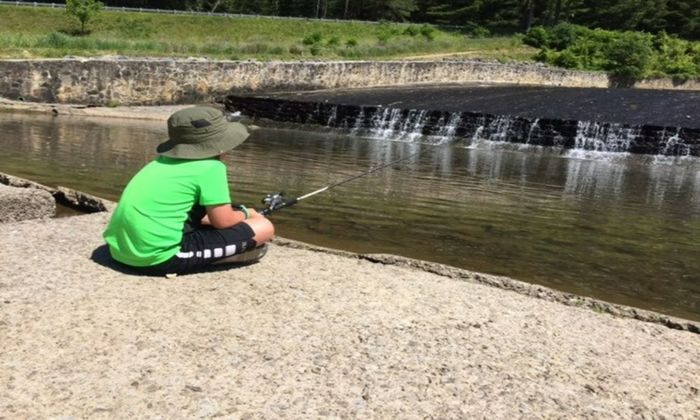Why Summer is a Great Fishing Season
Read more about what makes summer a great fishing season and get quick tips to catch bass, trout, crappie, and more.

Summer is a great season for any water-related activity, best of all fishing. Fish are more ravenous when the waters are warm. However, as in any season, timing is of the essence when fishing in summer weather because fish don’t like to get overheated any more than you do.

So, when is the best time of day to go fishing in the summer? There's the dusk vs. dawn debate, but if you have the time, why not try both and see which works best for you and your target species? During the summer, both times can be enjoyable. Fish will be eager to break their fast and forage for food near cover around dawn — before sunrise and mid-morning — before the waters become too warm. After the golden hour, when the sun sets and the water begins to cool but retains some of its warmth, fish can emerge from the depths to hunt for food.
If you have a specific target species, you will want to tailor your fishing day to fit their summer behavior. Here are some quick tips to get you started with some summer favorites.

Tips for Summer Bass Fishing
Bass like to seek out shade in the summer after spawning. Try targeting them under a pier, a bridge, or anywhere with an overhanging tree. A great way to spot them is to find their forage of choice during this time, such as small perch or catfish, frogs, crawfish, and bluegill.
Look for offshore schoolies, especially if you’re keen on targeting trophies. Trophies can be particularly hard to target when they’re on their own, but when schooling with smaller bass, they’re just not as smart and on guard, making them easier to catch.
One thing to note about bass fishing in summer is that it can be quite easy as soon as you become familiar with their behavior. They can be pretty predictable during summer. Look for spots with shade — this will hardly vary throughout the season, so you can always go back to the same key spots to target them on any day.
Tips for Summer Trout Fishing
A keyword to remember when fishing for trout in summer is the thermocline. It is essentially a spot in any water body with a great or drastic temperature change. It is the middle layer just below warm 80-degree surface water. This section experiences severe temperature drops, making it attractive to trout in the summer. It’s the smallest layer and is often found in lakes and ponds in the West. This is the layer of water to watch out for during mid-summer. To spot it, look out for algae and zooplankton. This water layer is teeming with baitfish and other game fish and trout.
Summer is the best time to experiment with your baits. Trout are actively feeding during summer and will likely bite anything so that you can get wild with your choices. It’s also the best time to get offshore and try targeting suspended trout — those that are out in the open water feeding.
Tips for Summer Crappie Fishing
Crappie, like trout, hide in the thermocline during warm weather; as a result, don't look for them in shallow areas like pilings. Look for brush piles or weed beds at a 15 to 20 feet depth. Other places to look for include areas below dams, higher in oxygen and cooler.

Trolling for crappie in the thermocline can be quite productive, but it would be best to troll with multiple lines because of its unpredictable nature. Spider rigging allows you to troll in different depths and uses different lure colors at the same time. Which colors should be in your rigs? Choose black, white, and chartreuse. Black for shallow clear water, white pair with a metallic spinner on bright days or stained water, and chartreuse for different water conditions and depths. Before planning this setup, check in your fishing area to see if spider rigging is permitted.
Night Fishing in Summer
Night fishing can have its challenges in any season, but it can be particularly productive in the summer, especially if you aim to target trophies. The key to summer night fishing is to take your time. No need to go deep. Around this time, big fish will be rising to the surface near the structure. Any shallow area that experiences traffic during the day will be teeming with fish at night. The best lure to use in the dark is the spinnerbait, or anything dark, that has a little bulk and gives off a natural vibration that will make it easier for fish to spot.
Other Summer Fishing Tips
When fishing in the summer, it's important to keep yourself protected from the elements. Wear waterproof sunblock with at least SPF 50, UV-protective clothing, and a bucket hat. Don’t forget to wear a pair of polarized sunglasses to help you see fish better while protecting your eyes from the glare reflecting on the water surface.



